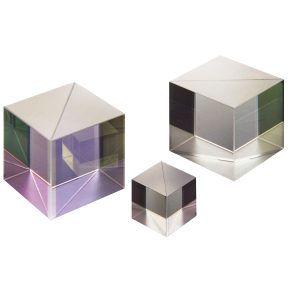Polarization splitting prism
PRODUCT CATEGORIES
INOUIRY
- When the incident angle of the polarization splitting prism meets the Brewster angle condition, the reflectivity of the polarized light p is 0, and the film layer is controlled so that the reflectivity of the polarized light s is close to 1 and the transmittance of the polarized light p is close to 1. Because the refractive index of the film layer is relatively small in the air, the refractive index of the film layer must be relatively small.
- Compared with the beam splitter, the reflection and transmission optical paths of the beam splitter are equal. When transmitting light, the beam splitting prism has no influence caused by light deviation, so there will be no problems of beam translation, ghost image and interference. Used for spectroscopic and imaging. Long time calibration is not required for 45 ° incidence. The P component of the incident light is completely transmitted, while the s component of the incoming light is reflected in a direction perpendicular to 90 °.
Technical parameters
| Items | Parameters |
|---|---|
| Material | optical glass, H-K9L (N-BK7) |
| Surface quality | 40/20- 60/40 |
| Effective aperture | 90% |
| Transmitted light offset | ± 5 arc minutes |
| Reflected light offset | 90 °± 5 |
| Dimensional error | ± 0.2mm |
| Bevel | 0.2x45 ° |
| Coating | inclined beam splitting film, and other right angled broadband antireflection film |
| Spectral ratio | R/T ± 10% of the average value within the nominal bandwidth |
spectral curve
In addition, We can customize the optical beam splitter according to customer requirements or drawings.
For details, please consult:
Related Products


